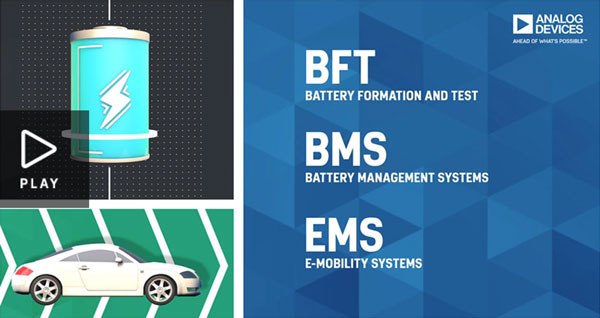
EXECUTIVE SUMMARY
How to Estimate Arc Flash Incident Energy When You Do Not Have a Proper Arc Flash Study
How to Estimate Arc Flash Incident Energy When You Do Not Have a Proper Arc Flash Study
- Arc flash incident energy determines the appropriate PPE for workers, but quantifying arc flashes is complex.
- Arc flash calculations require a two-step process.
- Constant energy boundaries are a tool for evaluating situations associated with arc flash over a range of fault current and OCPD response for a specific set of arc flash parameters and selected PPE.
- Another approach to determine required PPE is to adapt the findings from IEEE 1584-2002 arc flash studies.
- The NFPA 70E table 130.7(C)(15)(a) is an official method for estimating arc flash PPE categories, but it is not always conservative, particularly for low arcing current.
- Canada’s Workplace Electrical Safety Standard CSA Z462 includes a new table updated to reflect IEEE 1584-2018 as well as some of the concerns raised with table 130.7(C)(15)(a) in NFPA 70E.
Biography

Context
How to Estimate Arc Flash Incident Energy When You Do Not Have a Proper Arc Flash Study
Different approaches exist for determining the correct amount of PPE to protect workers from arc flash. In the absence of an arc flash study, workers may turn to NFPA 70E tables 130.7 (c) (15) (a).
The table, however, may be difficult to apply to a specific task or situation and may be very conservative, or not conservative enough. Graphical approaches like energy boundary graphs can be useful because they incorporate fault current variance and do not require the need to know the exact performance of an overcurrent protective device at a specific value of arcing current.
Key Takeaways
All methods used to estimate risks to human life must account for potential error.
To estimate risk, it is important to analyze probability and severity.
Electrical system studies aren’t an exact science.
Short circuit studies and almost all electrical system studies are biased conservatively—impedances are estimated low, while sources and short circuit currents tend to be estimated high. Short circuit studies ensure that all equipment ratings are high enough to handle potential worst case short circuit currents. If a high short circuit current event occurs, there could be serious consequences should equipment not be adequately rated.
Arc flash studies include many estimated variables which can impact the results in one direction or another.
Arc flash calculations require a two-step process.
Many of the values and inputs used for these calculations are never known exactly. If an error is conservative or within a margin that other factors account for, it’s okay.
The IEEE 1584-2018 model is conservative with respect to Ei, but Valdes believes it may not be conservative with respect to low Ia. IEEE 1584-2018 may not truly account for how low Ia can be, because it ignores factors excluded from the original test data. Some variance in Ia can have a significant impact on Ei.
First, arcing current (Ia)
- Voltage V: Usually well known within a narrow range
- Bolted fault current (Ibf): Estimated high, particularly in LV & may vary significantly, typically downward, due to expected or known & unexpected or unknown topology changes
- Arcing Gap (G): Can be measured, but usually is not, often guessed at. Guessing large is more conservative, drives lower Ia & higher Ei
- Electrode orientation (V or H): Seems obvious if you see the conductors, but it’s the direction power comes from that is important & one needs to see it relative to the task to be sure.
- Box or no box (CB or OA): Box size does not impact Ia, but impacts Ei per the model… but very large boxes may be like OA if the arc is unconstrained which leads to potentially lower than expected Ia
- Defines “average” Ia & “minimum” Ia. Minimum Ia doesn’t consider minimum Ibf, maximum gap or voltage regulation… minimum may not be minimum
Second, Incident Energy (Ei)
- Ia from step 1: 2 values, an average & a minimum
- Protection time (t): Derived from the expected response of the protection to the Ia that flows through it, or from the response of the protection mechanism used to mitigate the AF event. High Ia may cause the protection to be a lot faster, & low Ia the opposite
- Working distance (D): How far the worker’s chest is from conductor terminals. Usually comes form values in IEEE 1584 guide but may vary for multiple reasons.
- Size of the box (correction factor): Small & deep is more conservative but has relatively low effect.
- V & G are also used
A constant energy boundary (CEB) shows graphically how a protection system performs against a specific PPE performance target and range of arcing current. The CEB in the image below shows 480V, 18” D, 25mm G, in a standard box up to 100kA Ibf.
If Ibf is not a well-known variable, then Ia is even less so. Both the circuit breaker and fuse are “steeper” than the CEB. As a result, low Ia can result in higher energy than high Ia. This is counterintuitive. At high Ia, both the circuit breaker and fuse may be good enough. Fuse size matters whether it’s current limiting or not, and circuit breaker size, type, and settings matter.
- Engineering Designer
- Electrical Subcontractor
- General Contractor
- Mechanical Subcontractor
- Structural Subcontractor
If you have an IEEE 1584-2002 study but not a 2018 study:
- 2002 study → 8 cal/cm2 PPE & per this chart 2018 study with same inputs “may” be good enough for VCB or VCBB, but not HCB…But “may" be is not good enough
- IEEE 1584-2018 Iarc often higher than IEEE 1584-2002 Iarc, → the protection will be = speed, or faster, not slower
- For Ibf where the new Iarc is higher, if the protection was good enough for 8 cal/cm2 before, it's good enough for 8 cal/cm2 now—this chart shows that
- Margin between 2002 values & PPE selected, even better
- If the 2002 line is plotted at the highest Ei level calculated in the 2002 study and the 2018 lines are plotted at the available PPE level, the margin between can be leveraged
NFPA 70E takes a task-based approach to hazard risk analysis which has two steps:
Different Iarc and Ei
NFPA 70E Tables
Equipment Descriptions
Equipment descriptions include OCPD type or size and have equipment descriptions that don’t follow applicable standards. Switchgear, for example, doesn’t have fused switches.
Task or Bus Bar Direction
Table Entries
Most table entries can result in higher energy if arcing current is low or, worse, if the arcing current is low through the OCPD but not low at the arcing point, which may be the case with sources in parallel or significant motor contribution.
Rather than relying on NFPA 70E, a better approach may be to check with someone who understands arc flash calculations.
Shortcomings with NFPA 70E Table 130.7(C)(15)(a)
Focuses on a “maximum” Ibf and what the OCPD does at fault current.
- A user would need to know available fault current
- To determine what the OCPD does at the fault current you need the OCPD curve or a coordination study
- From the above you can determine clearing time at fault current which has nothing to do with arc flash but does tell you what PPE to wear based on this table
- All information the worker may find at job site!
- This should reduce error opportunities.
- Also uses relevant information
The constant energy line is another way to determine the correct level of PPE.
With this graphical method, you determine what you need to know to select PPE, consider variance in the fault current, and use variables that you have access to.
Determining PPE with a Constant Energy Line
Additional Resources
Executive Summary PDF

This summary provides options on how to estimate arc-flash when a study isn't available.
View Executive Summary

Webinar Presentation
This presentation covers the information shared on this page.
View Webinar Slides
IEEE 1584-2002 Arc-Flash Study

View Asset